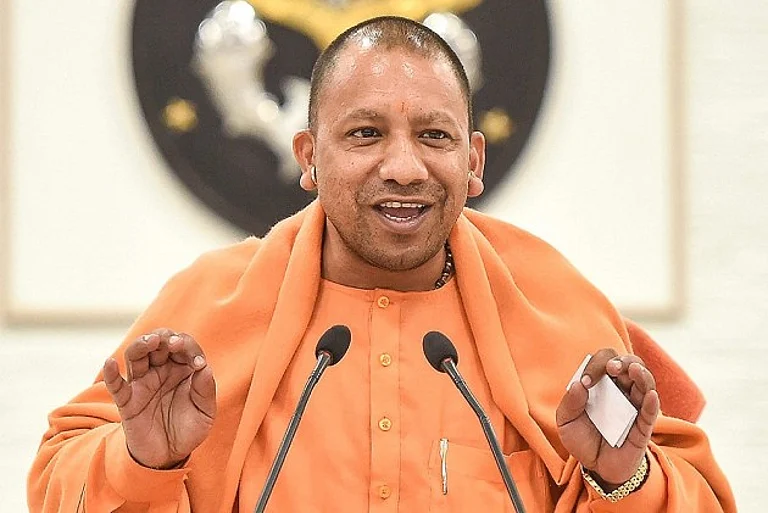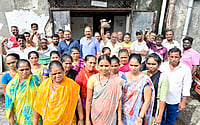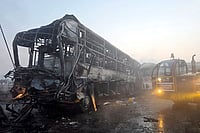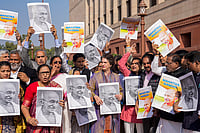
Parsiana, India’s long-running Parsi magazine, will publish its final issue on 22 October, ending 60 years of chronicling the community’s life, traditions, and debates.
The magazine documented everything from births, weddings, and deaths to social debates, cultural milestones, and the evolving identity of Parsis in India and abroad.
Under Jehangir Patel’s editorship, Parsiana championed progressive causes, recorded history, and became a vital archive for a shrinking community.
In Mumbai’s Parsi fire temples, including the Wadiaji Atash Behram in Dhobi Talao and the Anjuman Atash Behram in Marine Lines, antique clocks play a crucial role in maintaining the sacred schedule of Zoroastrian rituals, ticking in sync with the five daily gahs (prayer periods). This steady ticking will feature in the final issue of Parsiana, which is set for release on October 22.
At the old Parsi Maternity Hospital in Mumbai’s Fort district, where Parsiana has long been based, leafing through this last edition feels like revisiting a living archive. The cover image of an elderly priest tending a fire altar in Dadar Colony captures the enduring flame of Zoroastrian faith. As the presses prepare to stop after six decades, Parsiana, the long-standing voice of India’s Parsi community, is closing. Its end marks more than the loss of a publication; it signals the quiet fading of a chronicle that recorded a community now steadily shrinking in number.
Parsiana first appeared in November 1964, founded by Dr Pestonji Warden, a Parsi physician and sandalwood trader determined to document a community in flux. What began as a small cyclostyled monthly bulletin, launched in defiance of disputes with the Bombay Parsi Panchayat, grew into a fortnightly journal under journalist Jehangir Patel, who bought it for one rupee in 1973.
“I was working in America for newspapers for two years,” Patel recalled. “When I came back, I wanted to try something on my own. I thought a magazine for the community would be nice, small, Mumbai-based, wouldn’t require too much capital. A relative of ours, Dr Pesi Warden, was publishing Parsiana and he said, “Take over Parsiana, don’t start something new”.
From its modest office in the old hospital building, Parsiana became more than just a magazine. It served as a family record for the Zoroastrian diaspora, documenting births, weddings and deaths that reflected both tradition and change. While the world saw Parsis as the builders of Bombay’s skyline — Tata, Godrej and Wadia — Parsiana portrayed everyday lives: a widow in Andheri baking lagan nu custard for a neighbour’s Navjote, or an engineer in Toronto tracing his lineage to the shores of Gujarat, where his ancestors had once arrived from Persia.
An issue from 1988 remains among its most debated, one that listed interfaith marriages in Bombay. It caused outrage among orthodox circles but prompted discussion on faith and identity.
Under Jehangir Patel’s editorship, Parsiana championed progressive causes within the community. It supported women’s right to enter fire temples, questioned Parsi insularity, and recorded key milestones such as the opening of the Alpaiwalla Museum in 2025, the world’s only Parsi museum.
Its readership stretched across continents, from Sydney to London, even as the global Parsi population declined from about 114,000 in 1941 to fewer than 60,000 today.
In early 2024, Parsiana reported on the consecration of the Ram temple in Ayodhya. A Parsi high priest attended the inauguration, and several Parsi associations held jashans (prayer ceremonies) to express their support. Staying true to its independent voice, the magazine responded with a mix of irony and unease, wondering whether a critical column might invite “bulldozer justice” at its own doorstep — much as it had questioned authority during the Emergency.
“In our issues, we cover many subjects. We have written about about our assorted 1970s antique furniture, state-of-the-art 1990 vintage computer system or office, our priceless wall art made up of pictorial calendars from well-wishers, and our ever-growing stacks of unsold Parsiana copies,” Patel.
On a more serious note, the magazine reminded readers of the thousands who had been killed in the violence following the demolition of the Babri Masjid and reproached Parsis for their own instances of Islamophobia.
“Basically, what we do is mirror the community,” Patel said. “If somebody’s doing something, we write about it. We don’t try to create or change events. We tell people what’s happening and leave it to our readers to decide. We’re a liberal publication, but we’re not prescriptive.”
The office reflected that same spirit—more home than newsroom. “It’s not a commercial setup. It’s more like a family,” Patel said. A young journalist who worked there said, “When I went to that office, it felt homely.” The journalist was struck by the warmth of the place.
Funding, Patel said, was not the main concern. “People have been very generous. They advertise, they sponsor issues, they donate. But we have to make an effort. We have a very good team that does that.”
Still, time caught up. The final October issue, printed a few weeks ago, carries messages of farewell. “To think such a small community could be chronicled with such diligence and passion seems a daunting endeavor,” wrote one reader. On social media, old pages, recipes for patra ni machhi, and photographs of agiaries (Zoroastrian fire temple) have resurfaced in tribute.
The August editorial made the closure official. Fewer subscribers, higher costs, and no younger generation to take over left little choice. Patel, a Yale alumnus who has led the magazine for over fifty years, said simply, “It will happen to all our institutions. There are not many young people.” His 15-member team, most nearing retirement, will close this chapter with him.
Over the years, Parsiana also drew talent from beyond the Parsi community. Artist Manjula Padmanabhan contributed cartoons that captured community life with humour. Her sister, writer Geeta Doctor, added literary texture, while Geeta’s son, Vikram Doctor, later wrote about food for the magazine. Mario Miranda’s illustrated covers, including one showing a gahambar feast, became part of Parsiana’s visual memory.
Now, as boxes of old issues await digitisation by Patel’s daughter, Simin, the silence in the old hospital office feels heavy. When the last issue of Parsiana appears on October 22, it will mark not just the end of a publication, but the closing of a long chapter in the Parsi story—the flame that once kept time with the Atash Behrams will finally rest.












.jpg?auto=format%2Ccompress&fit=max&format=webp&w=768&dpr=1.0)
















